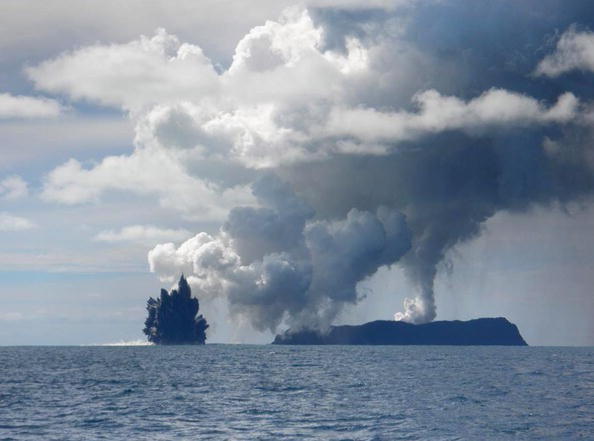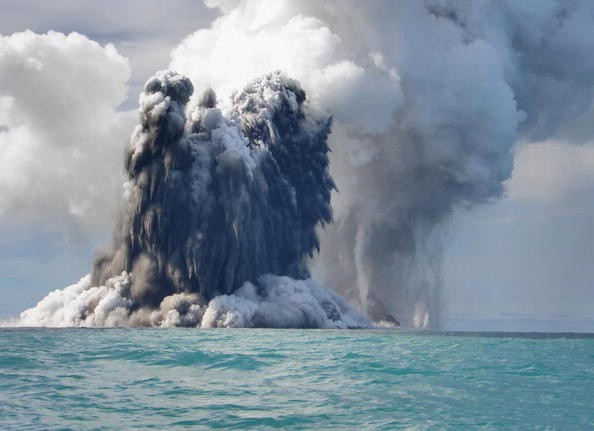A massive underwater volcano of about 2,690ft off the coast of Madagascar is believed to be an offspring of the largest underwater eruption ever recorded.

New Volcano
In 2018, the volcanic island unexpectedly emerged, extending up from the seafloor to the eastern part of the island of Mayotte which is between Madagascar and East Africa rifts.
Scientists don't know much about the processes in action deep inside the Earth, but such islands help in uncovering more information regarding the structure and activity.
The seismic event that gave rise to the new volcano began on the 10th of May 2018 and within a few days an earthquake with a magnitude of 5.8 took place. It rocked islands close by and scientists then discovered it had been the outcome of a new volcanic activity underwater.
Several French governmental institutions, headed by the University of Paris, embarked on a journey to the French African territory in order to get more knowledge. They discovered a mountain under the sea that wasn't there few weeks ago and they found out it needed 1.2 cubic miles of lava in order to form the volcano.
Also Read: New Sensors Help Detect and Predict Volcanic Eruptions
A Rare Phenomenon
Researchers started keeping a close eye on the area in February 2019 with the use of multibeam sonar, which let them map a 3,320 square mile area of seafloor.
An action they took to help them gain a better understanding of the nature and origin of the new volcano is positioning a network of seismometers on the seafloor to about three miles deep. Between February and May 2019, their network spotted about 17,000 seismic events from a depth of about 30 miles beneath the ocean floor and this is 'highly unusual'.
Most earthquakes are not as deep as this, also, another 84 events were at extremely low frequencies - another rare phenomenon - which added to the confusion.
The team explained: "The earthquakes have been much deeper than usual in a volcanic context and occur below the boundary between the crust and the mantle. They point to the existence of very deep reservoirs and drainage systems spread throughout the lithosphere, which had never before been clearly observed in volcanology."

Swarm of Earthquakes
This allowed the researchers to reconstruct the way the volcano formed, and they discovered it began with a reservoir of magma far below in the molten mantle layer.
The researchers say below the new volcano, there is a chance the tectonic processes have damaged the rocky outer part of the planet called lithosphere, which is made of brittle crust and laying on top of the upper mantle.
This damage brought about dykes that empty magma from a reservoir just beneath the crust, drawing it up through the crust and producing a 'swarm of Earthquakes'.
With time, the material found its way through the seafloor and then it erupted - at this stage it creates over 1.2 cubic miles of lava to make the new volcano.
For more news, updates about volcanoes and similar topics don't forget to follow Nature World News!
© 2025 NatureWorldNews.com All rights reserved. Do not reproduce without permission.





